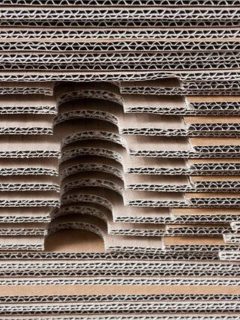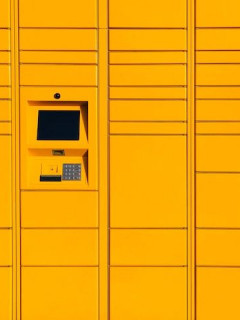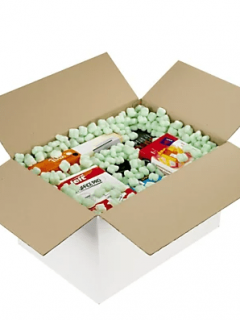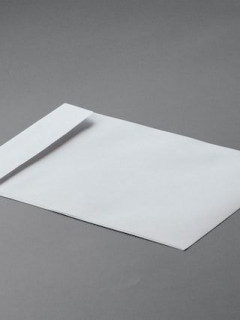Choosing the right label printer is a guarantee that shipments will be sent faster. Before deciding on a particular model of printer, you need to determine the warehouse’s need for shipping labels and analyse the parameters of the device: printing speed, size of labels and method of communication. If the company sends dozens of parcels a day, it is worth choosing professional thermal printers.
Label printer – what is it?
A label printer is a device which is mainly used in warehouses and offices dealing with the shipping of goods. The label preparation equipment can print not only consignment notes, but also individually defined tags for goods.
With the label printer, storage containers, binders and parcels can be labelled for the courier with an indication, for example, of special care during transport. A permanent print on the parcels guarantees that the parcel will always be identified by the courier without any problems.
I’m sure you’ve wondered more than once what to print your labels on. Nowadays, the most commonly used devices are thermal printers and thermal transfer printers. Such equipment is distinguished by its low running costs, as well as its excellent print quality on self-adhesive paper.
How does a label printer work?
Operating principle label printer is simple. This type of equipment works in a similar way to standard printers, but with the difference that the printouts are produced in smaller sizes. These are most often adapted to the general standards and guidelines of carriers regarding the size of waybills.
Or perhaps you want to find out, what is a logistics label and what it should look like? You can find out more about this in another RAJA blog post.
For some printer models manufacturers also provide dedicated software. This allows businesses to personalise labels and prepare their own printed designs for parcels.
Types of label printers – which ones are available on the market?
Self-adhesive label printers are most commonly available in either thermal or thermal transfer versions. What are the differences between these devices? Here is a brief specification and possible applications.
- Thermal printers – are used to prepare self-adhesive labels on a roll, which are coated with a specialised layer of photosensitive material. This is a chemical coating which is quite sensitive to external weathering. The lifespan of labels prepared in this way is quite short, so they are unlikely to be recommended for use as shipping labels for international shipments.
- Thermal transfer printers – paper self-adhesive labels can also be printed on these, although film rolls are more commonly used. Printing in this case is carried out using wax, resin or wax-resin ribbon. This translates into the durability of the printed image. Thermal transfer labels are durable and resistant to damage, making them ideal for logistics.
Of course, standard laser printers can also be used to print labels. However, these will not be as efficient as thermal or thermal transfer models designed for professional use.
How do I choose a label printer? A guide for entrepreneurs
Choosing the ideal label printer is not at all as simple as it may seem. At the stage of searching for the perfect device for your business, consider:
- The method of connectivity: modern label printers connect to your computer and mobile device wirelessly, via Wi-Fi. Alternatively, you can use wired connectivity with a dedicated USB cable or Bluetooth. However, the latter solution has some disadvantages. The main limitation is the range of connectivity.
- Label printing method: another important parameter is the printing method. Recommended label printers should print on self-adhesive paper rolls using either thermal or thermal transfer printing.
- Supported label sizes: label sizes should not exceed a width of 10-15 centimetres. This is rather standard as far as the requirements of courier companies in Poland are concerned. The most common shipping label size is 10×15 centimetres, and this is the size that your chosen printer should support.
- Print quality and DPI resolutionIt is worth selecting a label printer that guarantees print quality of at least 200 dpi. In industry, thermal printers with a resolution of 600 dpi are recommended. This guarantees perfect clarity of the shipping label.
- PurposeSome printers are designed solely for the printing of shipping labels generated by software supplied by carriers. Others offer the possibility of personalising their own label overlays, so that the printer can also be used to label storage containers.
- Print speedThis is a key parameter for companies shipping from several dozen to even several hundred parcels per day. With such high volumes, it’s also worth thinking about investing in a few professional label printers to improve the work of those carrying out the shipping of goods.
Or maybe you are just starting out in the retail and shipping business and need some tips, how to prepare your parcel labels? In the RAJA guide you will learn everything you need to know to choose the best printer, prepare your labels and label your parcels for courier delivery.
The best label printers – models recommended by RAJA
Having trouble choosing a label printer for your e-commerce business? Take a look at some of RAJA’s suggestions and you’ll be sure to be happy with the thermal printer you buy for your office or warehouse.
- The DYMO LabelWriter 550 label printer – is distinguished by its ease of use, built-in standby mode (lower power consumption), as well as high print quality in 300 dpi resolution. Its compact size allows it to be stored effortlessly even in small office or warehouse spaces.
- Zebra ZT230 industrial printer – is a model ideal for large companies that ship more than a few dozen parcels a day. The distinguishing features of this printer are its robust design, high printing capacity and intuitive interface. It is worth adding that the maximum diameter of the roll of self-adhesive labels is 203 mm.
- Zebra ZD421T label printer – this model comes in one variant with the option of printing up to 1,000 labels per day at a resolution of 203 dpi. Thermal printing is fast and detailed in this case. The maximum coil diameter is 127 mm and the thermal transfer ribbon length is up to 300 m.
Choose one of the above self-adhesive label printer models and you will certainly be 100% satisfied. Of course, in addition to purchasing a printer, you also need the necessary consumables. In this case, the basics are thermal labels, thermal transfer labels with perforations and wax-resin thermal transfer ribbons.
Is a label printer essential for the warehouse? Summary
A self-adhesive label printer should be an essential piece of equipment for a shipping warehouse, especially if the number of orders handled is increasing day by day. By investing in a professional thermal or thermal transfer printer, you can optimise the process of packing parcels and marking them for dispatch with logistics labels.
In summary: it really is worth investing in a proven and recommended label printer. All you need to do is analyse a few technical parameters, determine your warehouse’s label requirements and browse the models available for sale. This will be enough to make the right choice.














